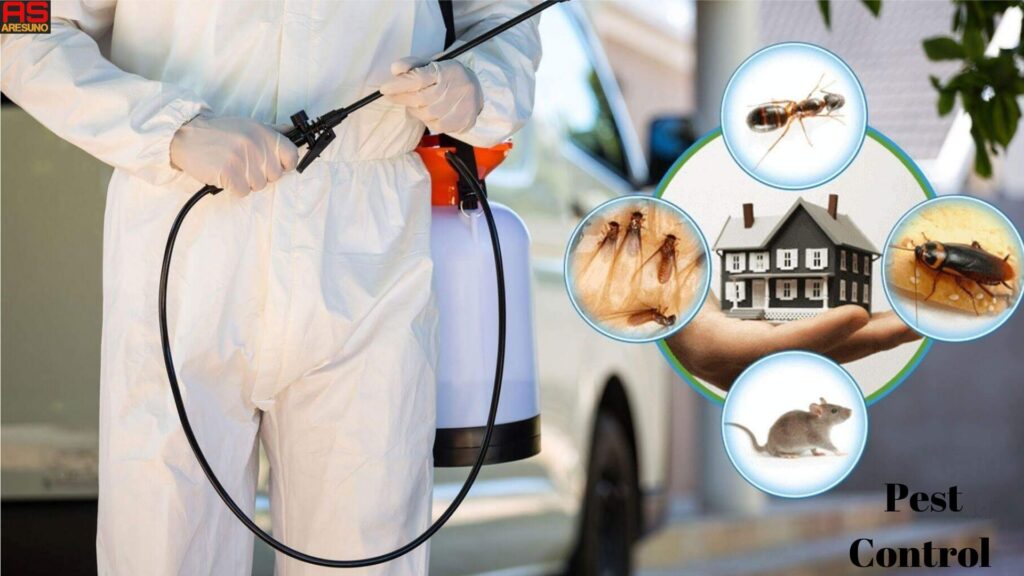
An Integrated Pest Management (IPM) inspection is more than a precaution—it’s a strategic move that helps commercial property owners prevent infestations before they begin and keep their spaces safe, sanitary, and compliant.
The Problem: Pests Don’t Wait for an Invitation
New York City’s commercial buildings are uniquely vulnerable to pest problems. Between aging infrastructure, high foot traffic, and abundant food and waste sources, pests find everything they need to thrive. And they don’t care if your property is a five-star restaurant in Manhattan, a bustling warehouse in the Bronx, or a cozy café in Queens—they just need a way in.
The trouble is, by the time you see the signs—droppings, gnawed materials, or a cockroach darting across the floor—you’re already dealing with an infestation. Pests are masters at staying hidden until their presence can no longer be ignored, and by that point, you’re already risking property damage, health code violations, and lost business.
Integrated Pest Management (IPM) offers a smarter approach. But far too many property owners wait until there’s a problem before they act. That delay can cost you.
The Agitation: Ignoring the Early Signs Can Cost You More Than You Think
Let’s look at a real scenario that played out last fall in the Bronx.
Case Study: Restaurant Warehouse in Hunts Point Market, Bronx
A midsize food distribution company operating in the Hunts Point Market had recently expanded into an older warehouse building. The owner assumed that routine cleaning and an occasional spray would be enough to keep pests in check. However, within two months of moving in, staff began noticing small moths in storage areas. Soon after, boxes of dry goods were being returned with signs of rodent chewing.
By the time a pest control expert was called in, the problem had grown: stored product pests had infested multiple shelves, and rodents had made their way into the drop ceilings. Worse, a surprise health inspection uncovered droppings, triggering a violation and temporary shutdown.
The total cost? Over $30,000 in lost inventory, service disruptions, and building remediation. It was a hard lesson—but it didn’t have to happen.
A simple Integrated Pest Management (IPM) inspection at move-in would have identified structural vulnerabilities (like gaps around the loading dock), sanitation lapses, and conditions ripe for infestation. A preventive approach could have protected their stock, reputation, and bottom line.
The Solution: What Makes IPM So Effective?
Integrated Pest Management is more than just spraying and baiting. It’s a proactive, strategic process that includes:
- Inspection and Assessment: Thorough evaluation of the entire property to identify existing pest activity, points of entry, and environmental conditions that attract pests.
- Monitoring and Identification: Setting up non-toxic traps and using expert observation to understand the type and extent of pest issues, if any.
- Exclusion and Prevention: Sealing cracks, installing door sweeps, fixing leaks—addressing the root causes that make your property a pest magnet.
- Targeted Treatment: Applying the least invasive, most effective treatments only when needed—minimizing chemical use while maximizing results.
- Education and Maintenance: Working with property managers and staff to create lasting pest-resistant habits.
The goal is simple: long-term pest control without relying solely on reactive chemical treatments. For commercial spaces—especially food businesses, schools, healthcare facilities, and warehouses—IPM is often the only approach that meets safety and compliance standards.
Conquering Cockroaches in the Big Apple: Your Ultimate Guide to Effective Roach Extermination in NYC
Why Commercial Properties Can’t Afford to Skip IPM
You’re not just protecting your property—you’re protecting your reputation, your customers, and your employees. When pests are spotted, even once, they erode trust and can cause lasting damage to your business.
Here’s what an IPM inspection can help you avoid:
- Health Code Violations: The NYC Health Department takes pest issues seriously, especially in food and hospitality sectors.
- Customer Complaints and Bad Reviews: One sighting posted online can do lasting damage.
- Inventory Loss and Structural Damage: Pests like rodents and termites can chew through wiring, drywall, and stored goods.
- Escalating Treatment Costs: Reactive treatment of a full-blown infestation is always more expensive than preventing one.
And with pest pressure growing due to climate shifts, increased urban development, and high-density living, waiting to act just isn’t worth the risk.
Why IPM Works So Well in New York City
New York’s commercial buildings are often older, multi-use, and densely packed. These conditions are a dream for pests but a nightmare for property owners. IPM is especially effective here because it considers the local realities—shared walls, basement moisture, food waste, and limited access to hidden spaces.
Local pest professionals understand how Brooklyn termites may behave differently than their counterparts in suburban areas, or how cockroach infestations move between floors in mixed-use buildings. This level of local expertise is what makes diamond pest solutions stand out—offering tailored inspections and IPM programs that actually work for New York properties.
When to Schedule an IPM Inspection
Think of it as a check-up for your property. The best time to schedule one is:
- Before moving into a new commercial space
- After any renovation or construction work
- Seasonally—especially in spring and fall when pest activity spikes
- If you’ve had recurring pest issues that haven’t been resolved
- Any time you take on new storage, equipment, or food processes
In neighborhoods like Long Island City, where food startups mix with industrial buildings, or in the termite treatment the Bronx commercial zones, smart business owners aren’t waiting for pest problems—they’re preventing them with IPM.
How to Get Started with IPM for Your Property
If you’re unsure where your property stands, start with a professional inspection. A qualified pest expert will walk through your building, assess vulnerabilities, and give you a realistic overview of current conditions—no scare tactics, just the facts.
Choose a provider with real experience in commercial spaces and who understands the regulatory landscape in New York City. That’s why more building owners are turning to trusted names like diamond pest—for straightforward assessments and smart, preventive solutions.
The Bottom Line
IPM inspections aren’t just for buildings with visible pest issues—they’re for responsible business owners who want to stay ahead of trouble. Whether you run a kitchen in the Bronx or manage a commercial warehouse in Queens, you need more than a can of spray—you need a plan.
And it starts with a conversation.
📱 +1 718-427-6200
Let our experts help you protect what matters most.







